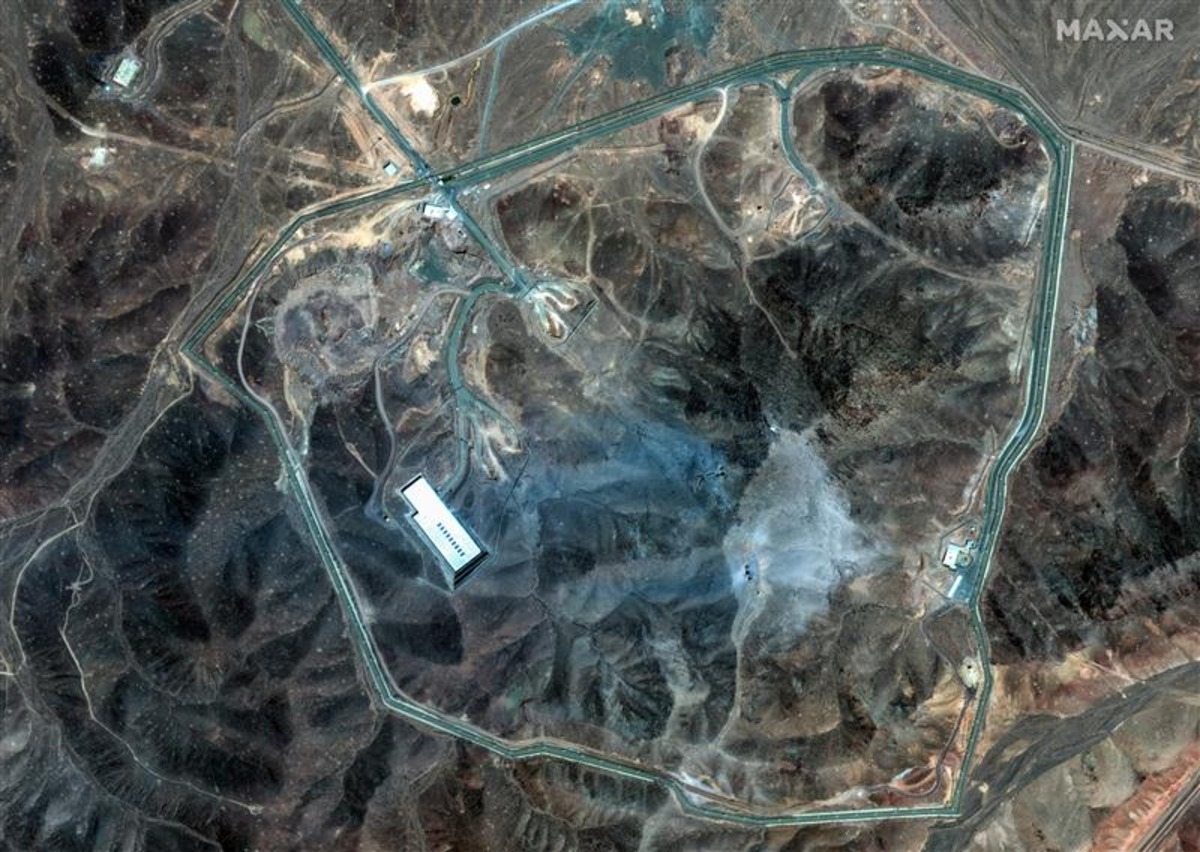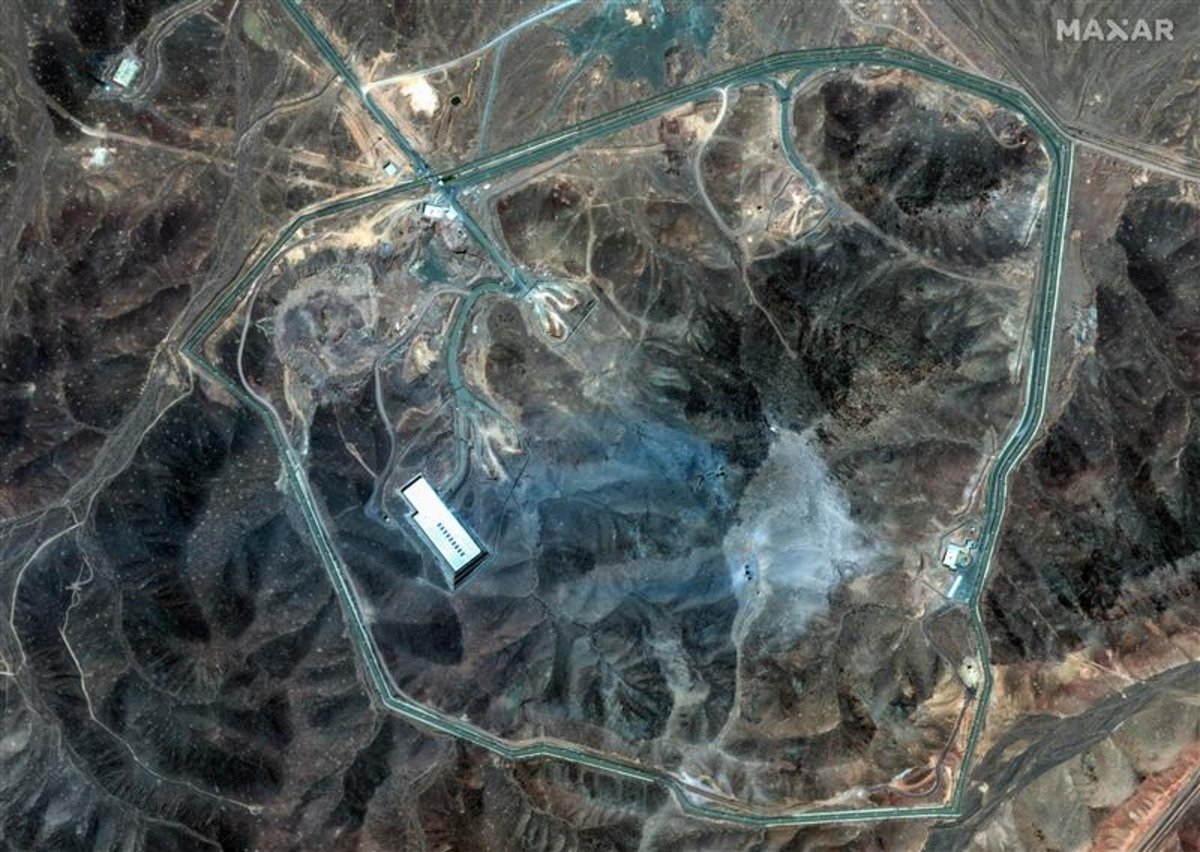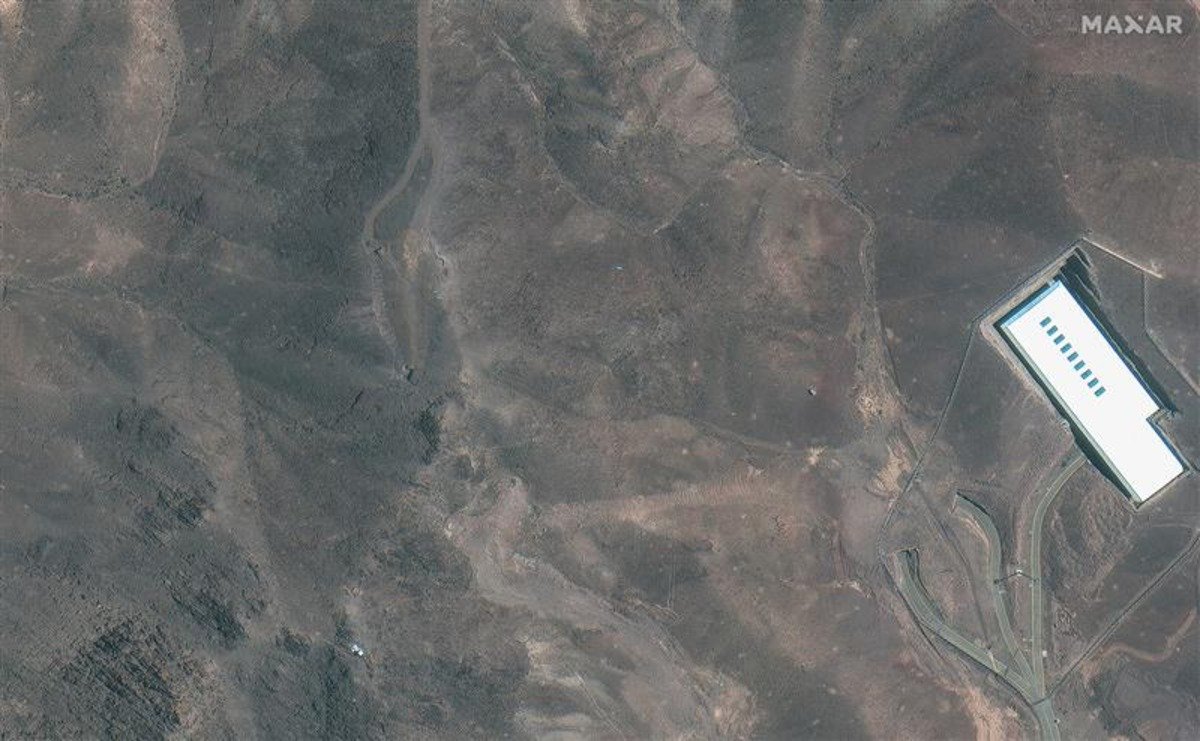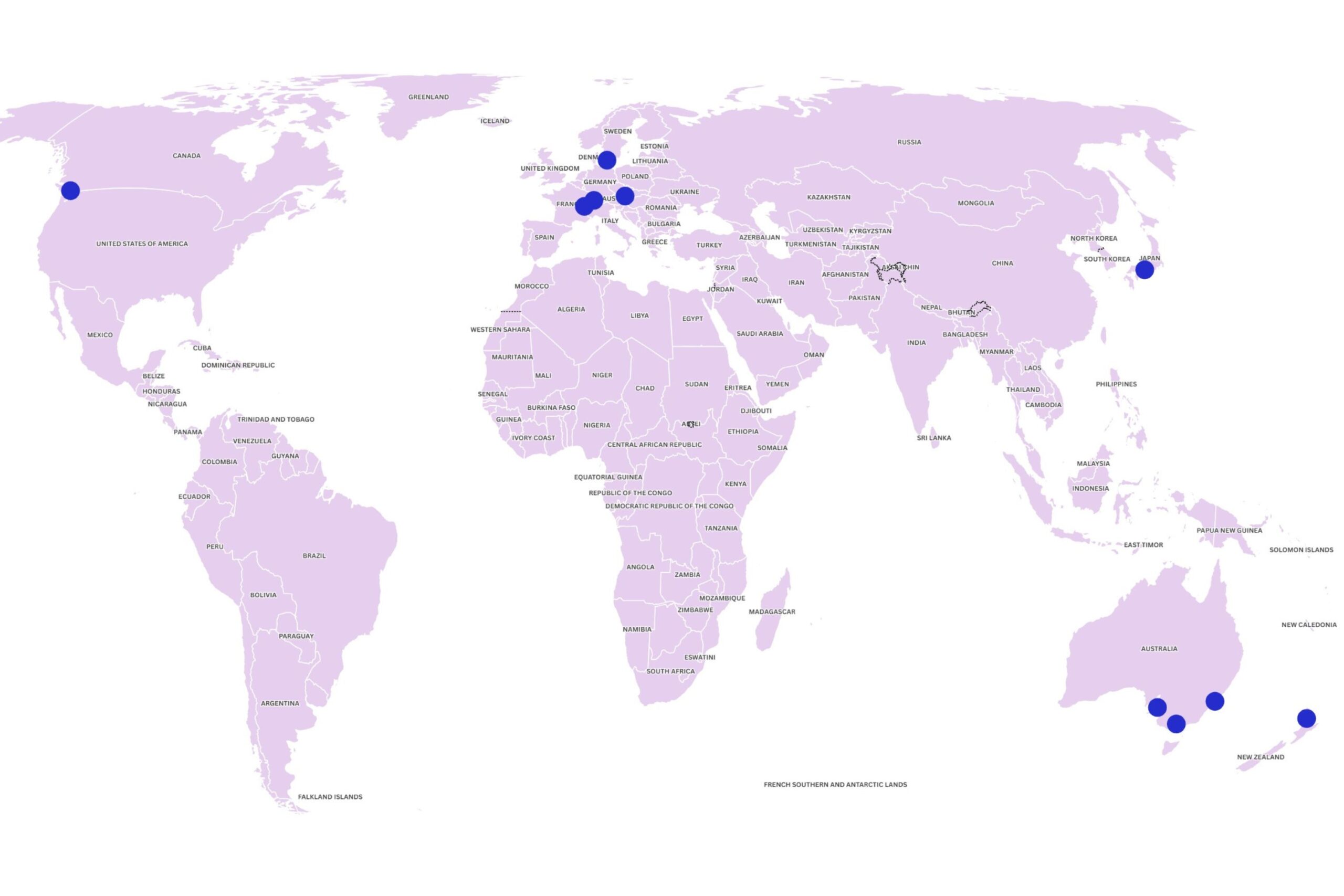
New satellite imagery shows large craters and ash at Iran’s Fordow nuclear facility following U.S. airstrikes that President Donald Trump said had “totally obliterated” Tehran’s major nuclear sites.
The Context
Trump confirmed late on Saturday that the U.S. had carried out “massive precision strikes” to take out Tehran’s nuclear enrichment facilities and damage its ability to make a nuclear weapon.

Satellite image ©2025 Maxar Technologies

Satellite image ©2025 Maxar Technologies
What To Know
The U.S. struck Fordow, roughly 60 miles south of Tehran, as well as the Natanz complex to the southeast and Isfahan, southwest of Natanz, Trump said. The president hailed the attacks as a “spectacular military success,” adding: “Iran’s key nuclear enrichment facilities have been completely and totally obliterated.”
Experts said it was too early to tell exactly how much damage has been done to Iran’s network of nuclear sites. General Dan Caine, the chairman of the U.S. joint chiefs of staff, said on Sunday morning that initial assessments of the operation dubbed Midnight Hammer indicated “all three sites sustained extremely severe damage and destruction,” but analysis was ongoing.
Israel continued attacking Iran into Sunday, and Tehran launched fresh strikes on several Israeli cities.
Satellite imagery published by space imagery firm Maxar on Sunday showed a number of large craters or holes at the top of the ridge, under which is the underground complex at Fordow.
Ash from airstrikes covers much of the area, and several of the entrances to Fordow’s tunnel network appear to be blocked with dirt, Maxar said. Images separately published by Planet Labs on Sunday also showed ash covering the area around Fordow.
Fordow is built under a mountain, a facility that was secret until 2009 and Israel has been unable to destroy with its weapons. While Israel has carried out strikes on Iran’s nuclear sites—including Natanz and Isfahan—since it started its campaign over a week ago, the U.S. is considered the only country able to reach the deeply buried sites like Fordow using B-2 bombers and “bunker buster” bombs. These huge bombs had never been used before in combat.

Satellite image ©2025 Maxar Technologies

Satellite image ©2025 Maxar Technologies
Caine told the media on Sunday morning that the U.S. had used a total of 14 30,000-pound GBU-57/B bombs against two nuclear target areas in Iran. Reports had suggested at least one GBU-57/B was fired on Natanz.
A U.S. submarine launched more than 2 dozen Tomahawk cruise missiles against the aboveground facilities at Isfahan around 5 p.m. ET on Saturday, just before U.S. aircraft entered Iranian airspace.
Washington used deception tactics and a host of fourth- and fifth-generation aircraft traveling ahead of B-2 bombers to sweep for Iranian fighter jets and air defenses, Caine said.
At 6:40 p.m. ET, the first B-2 dropped two “bunker buster” bombs at Fordow, the chairman said. The rest of the munitions were dropped in the following 25 minutes, and Iran did not fire any shots at U.S. aircraft traveling in or out of Iran, Caine added.
Caine said full damage assessments were still pending, but that “all three sites sustained extremely severe damage and destruction.”
The U.S. “achieved destruction of capabilities” at Fordow, U.S. Defense Secretary Pete Hegseth said.
What People Are Saying
U.S. Defense Secretary Pete Hegseth, speaking alongside General Dan Caine on Sunday, said, “Iran’s nuclear ambitions have been obliterated.”
What Happens Next
Trump has threatened further strikes on Iran if Tehran does not negotiate a deal, while the country’s foreign minister, Abbas Araghchi called the American attacks “outrageous,” promising “everlasting consequences.”




